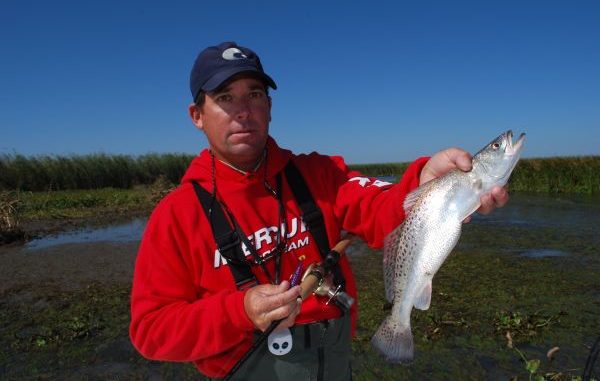
A guide does not make a living by lures alone. He needs other stuff — reels, rods and line.
Unlike some professional fishermen who sneer at the use of anything besides baitcasting reels, and then only use a particular model, Roberts is more easy-going.
He does, indeed, use mostly baitcasting reels, but is not dogmatic.
“Baitcasting is just a personal preference of mine,” Roberts said. “I’ve been using them since I was a kid. I really don’t think that there is any advantage in a baitcasting reel.
He favors Shimanos in general because they last, they are smooth and they have good drag systems. He will use several models, including Chronarchs and Curados.
Rods tend to be Shimanos, as well. More important than brand name is that he simply wants a light, sensitive rod that won’t wear him out fishing all day. A limber tip is important to him because it won’t rip the hook out of a trout’s soft mouth. Seven-footers in medium or medium-light action are the rule.
Line choice is a little more complex. Monofilament, typically 12- or 15-pound-test Trilene Big Game, is the rule for trout fishing. Braided line doesn’t have any stretch, and Roberts feels that using it causes hooks to rip loose from trout mouths.
He does use braided line to fish for bass and redfish, though, as well as when he uses spinning equipment. But since braided line “twists like crazy,” he always uses a 14- to 18-inch length of monofilament above and below any popping cork.
He also uses a similar length 20- to 30-pound-test monofilament leader when he fishes plastic with braided line. Here, its intent is to provide a little stretch.
Roberts never uses fluorocarbon leaders. Our waters, he believes, never get clear enough to need it, and Louisiana fish are not as pressured as elsewhere.
